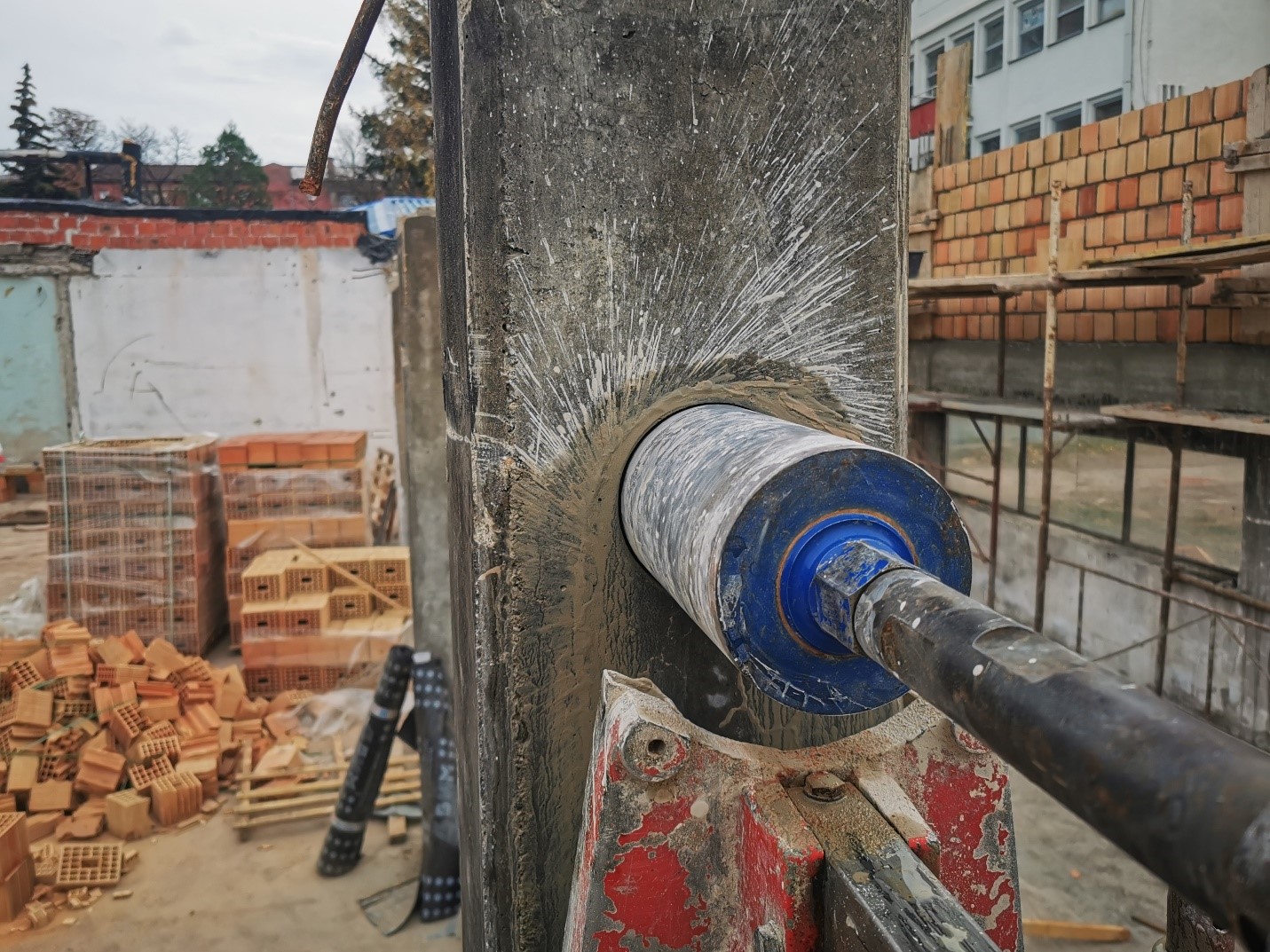The construction industry is a major industry that continues to grow rapidly. Everywhere you look, you can see connection and development underway. Large-scale urbanization has made construction necessary, be it the building of infrastructure or residential housing.
The construction industry in the US alone has a market size of $1.36 trillion. Compared to this the global market size is a staggering $8.2 trillion and is expected to grow to $17 trillion by 2029.
As cities develop, grow, and require reconstruction and repair it is hard to envision a future where the construction industry does not play a key role. This is why the industry is ever-evolving. New techniques and more efficient methods are constantly being devised and implemented. One such method is the core drilling method.
Core drilling is widely used in construction. It is a versatile technique with many advantages. Let us examine how core drilling works and its applications in the construction industry.
Core Drilling – An In-Depth Look
Drilling methods have evolved over the years. Modern technology has made it possible to improve precision, control, and speed with which drilling is being done.
One technique that, combined with the appropriate equipment, has improved how drilling is done is core drilling. The technique’s name reflects the method it employs to drill through material.
In core drilling the drill bit consists of two parts, one that moves and one that remains stagnant. The stagnant part is the inner drill bit, the core. As drilling is done using this technique only the outer drill bit moves and creates a perfectly round cut. The core can then be retrieved without any damage.
Core drilling results in a clean and precise cut. This is why it is the preferred drilling method when minimal damage is needed. This includes repairing old structures and excavating technologically significant sites. The stationery core acts as a steadying force limiting any kind of damage.
Core drilling also allows for greater control and is used where accuracy is key. Many construction projects, especially large-scale ones, require core drilling as it maximizes control and is versatile.
Other drilling methods, like horizontal directional drilling, are used for digging trenches and laying down pipes. Each drilling method has its purpose. Core drilling is widely used in construction because the technique has many uses.
Uses Of Core Drilling In Construction
The core drilling technique is not just suitable for construction applications that require precise holes but have multiple uses as well. Here are some of how core drilling is used in construction:
Extracting Samples
Core drilling does not allow users to make real goes and provides a sample of the material drilled through. The inner core that does not move can extract the material being drilled.
You can get a sample if you work with concrete, asphalt, or other building material. The sample can be examined in detail and the integrity of the material can be judged more accurately.
Core drilling, for example, is used for collecting soil samples, especially from sensitive sites, like technologically significant areas. The drilling method makes it possible to take the sample without causing much damage.
Giving Support
Construction regularly involves the use of support. The structure may need extra support before it can be completed. This may mean using steel rods or beams to provide a supportive frame.
Holes need to be drilled when placing these rods and beams so they can stand upright. A core drill is the best option in such situations since it can make precise holes that will grip the beams firmly in place.
Creating Holes
Construction and building involve creating holes of many different sizes and depths. You may be required to make holes for openings, like a circular window or air vents, and core drilling is a great way to achieve the best outcome in the least amount of time.
Drainage And Plumbing System Installation
All kinds of utilities, from water to heating, require core drilling. Miles needs to be drilled to install the water and sewage system. You need to lay down the pipes and connect them throughout the house. Core drilling can drill through different materials and enable you to install the water and drainage system for the entire house.
Installation Of The HVAC System
The heating, ventilation, and air conditioning system again requires air vents and ducts that need to be connected throughout the house. Core drilling allows for accurate holes that help the heating or cooling spread around the house. The air vents ensure that the air inside the house keeps circulating and remains clean.
Working On Existing Structures
Core drilling is suitable for new construction and the repair and maintenance of existing structures. This is because core drilling allows adding support to an existing structure. Furthermore, precise drilling means that the least damage is done to existing structures. For example, core drilling is used for working on existing sewage systems because the technique is accurate and gentle.
Working on already existing structures is hard as it requires extreme caution. You need to preserve the integrity and strength of the existing structure while doing the reconstruction and repair work. Core drilling is the perfect technique since it minimizes any kind of damage.
Core Drill Utility
The core drilling technique has many different applications. The technology is applied for a whole variety of uses. While we have discussed using the technique for construction and building purposes, it still does not cover the scope of possibilities available with core drilling.
Core drilling is useful for mining as well as for collecting ground samples. It is also used for large-scale projects like constructing roads, making manholes, installing lights down an airport runway, and many more.
The technique is valued for its efficiency, accuracy, and cost-effectiveness. Curiously enough, core drilling had been present in one form or another even during ancient times. It was used, for instance, by the ancient Egyptians. If anything, this history is a testament to the technique’s effectiveness that makes core drilling even today.
